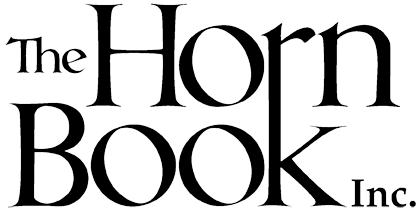2018 School Spending Survey Report
I like to believe that over ten years of reading books aloud to children has provided me with a strong sense of the ones that will capture not just their attention but also (and perhaps more importantly) their hearts and minds.
 I like to believe that over ten years of reading books aloud to children has provided me with a strong sense of the ones that will capture not just their attention but also (and perhaps more importantly) their hearts and minds. The books they beg me to read again and again. The books that cause them to rise from their “criss-cross applesauce” positions, pressing their faces right up to the page so they can study the details. The books that rarely reside on our library shelves, because a child always spies them and swipes them off the shelving cart. I can almost always predict which books will earn this coveted attention and devotion, but sometimes a book surprises me.
I like to believe that over ten years of reading books aloud to children has provided me with a strong sense of the ones that will capture not just their attention but also (and perhaps more importantly) their hearts and minds. The books they beg me to read again and again. The books that cause them to rise from their “criss-cross applesauce” positions, pressing their faces right up to the page so they can study the details. The books that rarely reside on our library shelves, because a child always spies them and swipes them off the shelving cart. I can almost always predict which books will earn this coveted attention and devotion, but sometimes a book surprises me.Three years ago, I decided to share Virginia Lee Burton’s 1943 Caldecott winner The Little House with kindergartners. Though it is a beloved favorite of mine, the thought of reading it aloud to a group of squirrelly kindergartners made me a bit nervous. Gentle classics and attention spans of this generation’s media-saturated children don’t always coincide. To my delight and amazement, The Little House enthralled my students and, due to numerous requests, I read it again to the same groups of children just two weeks later.
The Little House experience occurred again last spring when I read aloud Sophie Blackall’s Hello Lighthouse. Would my deep love and admiration for the book be shared by a group of six-year-olds? I didn’t know what to expect. My internal dialogue during the first read-aloud best illustrates the children’s reaction: “Oh no, I think we only have one nonfiction book about lighthouses”; “I should be happy that my students are pointing out details that I had not previously noticed, right?”; and “Does sitting directly on top of my four-inch wedge sandals not hurt these children?”
In her 1943 Caldecott acceptance speech, Virginia Lee Burton said, “To return ... to the essential qualities of children’s picture books, one must strive to give children what they like and want, and I am convinced that they like and want the best qualities.” Sophie Blackall's Hello Lighthouse captures the hearts and affections of my students because it has the “best qualities” — and these best qualities make it worthy of the 2019 Caldecott Medal.
The first best quality in the book is the steadfast lighthouse. Like the house in The Little House, the sturdy and noble lighthouse remains unchanged amidst the tumult and change that occurs around it. Blackall positions the lighthouse in the exact same place on eight double-page spreads. Spouting whales, crashing waves, wind, fog, ice, pink sunsets, and various other weather elements give each spread a distinct look and feel, but the lighthouse remains unchanged. The lighthouse’s consistent placement and position, as well as its unchanging appearance, is in direct contrast with the fluctuating weather elements. Through this contrast, we see and understand the sea’s unpredictability, force, and wild beauty, as well as the need for the lighthouse to send “its light out to sea, guiding ships on their way.”
Another best quality is the masterful use of shape. Until Hello Lighthouse, I did not associate circles and lighthouses. But of course, the inside of a lighthouse is circular. Spreads inlaid with smaller, rope-framed circular illustrations; rooms decorated with round rugs and tables; a quilt with the friendship ring pattern — Blackall expertly executes the circle motif, and the effect is powerful. Now consider the book’s shape: like a lighthouse, it is tall and rectangular. Consider the design expertise needed to merge the lighthouse’s exterior height and shape with its circular interior. Circles are common in square-shaped books, but I have never seen them used with such perfection and efficacy in a tall, narrow portrait-shaped book.
A final best quality is the attention to detail evident in the Chinese ink and watercolor illustrations, as well as the book’s construction. The cutaway illustration of the lighthouse is informative, intricate, and the reason why my students felt the need to sit on my feet, pressing their faces close to the page. The lighthouse’s interior furnishings, the keeper’s uniform, the tender and its supplies, the logbook — the illustration details are historically accurate, adding a depth rarely seen in books for children. In the words of Burton: “[Children’s] perception is clear and sharp, perhaps more than ours. Little things interest them. No detail escapes them.” Every detail in Hello Lighthouse holds individual intrinsic interest and significance, yet also contributes to the book’s overarching design and story, as do the details of the book’s construction — the lighthouse on the spine, the informative endpapers, the additional illustrations under the jacket, and the unexpected single gatefold in the final pages. Yes, these details lift the book from a level of excellence to one of eminence, but more importantly they gift children with a sense of good design and an appreciation for beauty. This is how the picture book works. Once again, referring to the wisdom of Virginia Lee Burton,
“The basic things are always the most important, and good art, certainly a basic thing, impressed on young minds through the medium of children’s books is without doubt one of the best possible ways of giving children a true conception of the world they live in.”
Using pictures to tell the story of a steadfast lighthouse and its faithful keeper, Hello Lighthouse is a gift for children. Amid this world’s stormy seas, it is a beacon of light shining bright with truth, goodness, and beauty.
What do you think? Will 2019 be the year that Sophie Blackall joins the ranks of beloved illustrators, such as Robert McCloskey, Barbara Cooney, and Chris Van Allsburg (among others), who have received multiple Caldecott Medals?
[Read the Horn Book Magazine review of Hello Lighthouse here.]
RECOMMENDED
ALREADY A SUBSCRIBER? LOG IN
We are currently offering this content for free. Sign up now to activate your personal profile, where you can save articles for future viewing.








Add Comment :-
Comment Policy:
Comment should not be empty !!!
Sam Juliano
I had the great fortune of meeting and speaking to the exceedingly gifted Ms. Blackall this past week at Manhattan's Books of Wonder, where she appeared on a panel speaking on "Hello Lighthouse" and her recent collaboration with Lindsay Mattick, "Winnie's Great War" Though I rarely pose queries in the Q & A sessions, I did this time, broaching the great classic "The Little Red Lighthouse and the Great Grey Bridge", a book Blackall expressed great fondness for. I mentioned the comparable color scheme and concluded though I do love Lynd Ward's art in that venerated classic, I actually love "Hello Lighthouse" even more. I join the others here in noting the book's lighthouse shape in conjunction with Emmie Stuart's masterful delineation of that quality is this fantastic and passionate qualification essay. Really, really appreciate this intimate recall of your students' glowing reaction to the book, which is certainly one of the premier picture book achievements of 2018, a work that splendidly transcribes the weather encircling this pillar of fortitude in the days when its protection was vital to ships in dangerous waters. My wind always shifts to the Cape Hatteras lighthouse in NC, which I remember was once immortalized on a postage stamp in the Americana series. Loved reading all your eloquently-expressed observations on the book's artistry (the circular motif here is striking indeed) as well as your buffo entry point with the reading of Burton's "The Little House" one of my all-time faves. When I first laid eyes on this book over the summer at the book's launching at a Brooklyn bookstore I said to myself: "Wow, does this mean another Caldecott for Sophie Blackall?" Although there are about a dozen books that are just as poised and deserving this year, I haven't really vacated that position and I think it is wonderful that the book has inspired such a pitch-perfect and emotionally attuned review, with first-hand student experience.Posted : Oct 12, 2018 02:03
Laura
It works with older children, too. i read it to third graders, and they were silent and intent. At the end they clapped fervently, and one tough little guy, who is never still, said, "Best. Book. EVER."Posted : Oct 12, 2018 01:03
Dean Schneider
What a beautifully written post, Emmie! I especially love your specific comments on your students' reactions. So great that you can actually try out the books with young readers and report back to us. And when I'm not reviewing a book myself, how nice to have someone else do the leg work and point things out for me! This is one of my favorites of the year, too! I'll have more to say later.....Posted : Oct 11, 2018 10:27
Susan Dailey
Emmie, thanks for sharing your students' responses to this book. It is a favorite of mine this year. I hadn't noticed the shape of the book, but you are correct. It's perfect for it's subject. I appreciate that the title on the cover introduces the circular motif found throughout. And although circles often indicate comfort, Blackall uses them effectively to show stormy seas. The spread that captured my heart shows the light keeper holding his newborn daughter. Wow! Like Cherylynn, I also was struck by the fog illustration. And in a nod to Robin Smith, I noticed and appreciated the quality of the paper. This feels like and looks like a serious Caldecott contender to me.Posted : Oct 11, 2018 08:51
Cherylynn
This is one of my favorite books of the year. I agree with you and want to point out a few illustrations that really struck me. There is a small circular illustration on one page where the keeper looks through his telescope at a tender that is bringing his wife. The illustration includes a small picture of the boat in the circle at the end of the telescope. The picture of the lighthouse in the fog with it's vague softened faded look. I loved a lot the last page with the family looking from the house on shore toward the lighthouse. So many details. Coats, anchors pictures and even a note in a bottle. These little details are what make this book so special.Posted : Oct 11, 2018 05:59